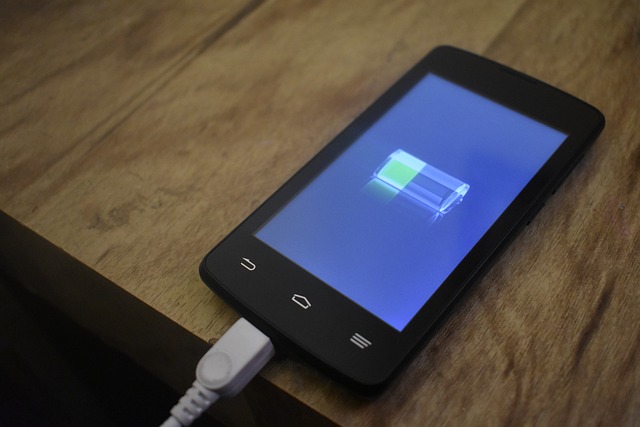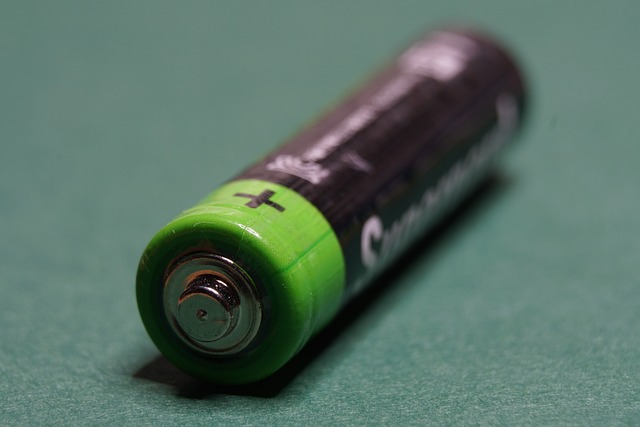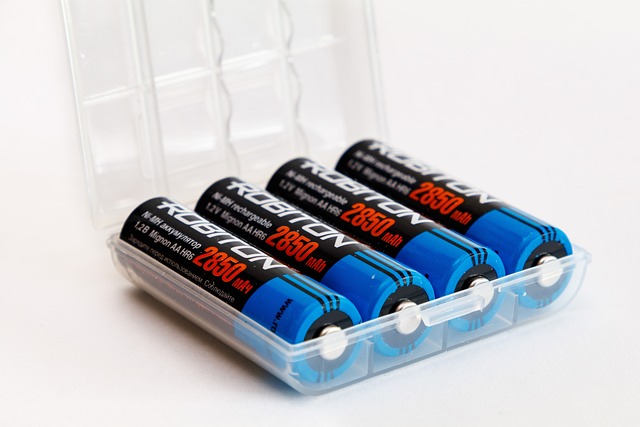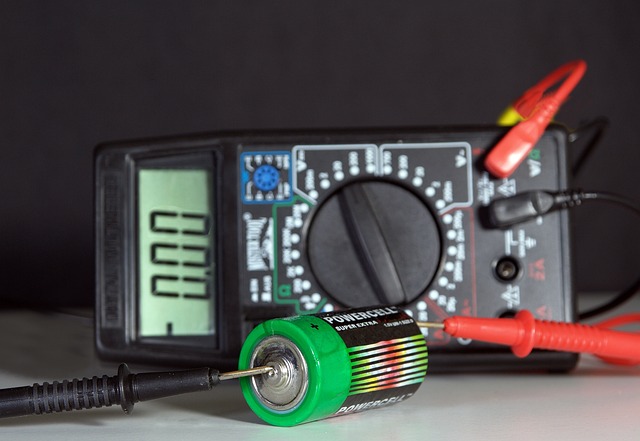To ensure your laptop maintains peak performance and a long service life, regularly monitor and replace your lithium-ion battery as needed, especially when signs like extended charging times, reduced battery life, or failure to hold a charge appear. It's crucial to use genuine manufacturer batteries or certified alternatives to avoid safety risks from counterfeit products. The replacement process should be carried out with caution, preferably by a professional due to the inherent dangers of handling lithium-ion cells. Regularly assess your battery's condition and perform a timely replacement to prevent issues like data loss or unexpected shutdowns. Always source a compatible replacement battery that matches your laptop model for optimal performance and safety. After installation, practice careful battery management by maintaining charge levels between 40% and 80%, calibrating the battery regularly, and operating your laptop in an environment that protects it from extreme temperatures. Following these guidelines will help extend the life of your new battery and ensure continued reliable operation of your device.
When your laptop’s power source falters, a simple replacement can rejuvenate its performance. Understanding the significance of a healthy battery is key to maintaining optimal laptop functionality. This article delves into the necessity of safe battery replacement practices and guides you through the process, emphasizing the risks associated with do-it-yourself attempts. From identifying when your battery needs replacing to choosing the appropriate replacement and post-installation care, we’ll cover everything you need to know for a secure and efficient laptop experience. Replacing your laptop’s battery is not just about extending its life; it’s about safeguarding your data and ensuring uninterrupted work or leisure.
- Understanding the Importance of Battery Health for Laptop Performance
- Identifying When It's Time to Replace Your Laptop's Battery
- The Risks of DIY Battery Replacement and How to Avoid Them
- Step-by-Step Guide to Safely Replacing a Laptop Battery
- The Role of Certified Technicians in Safe Battery Replacement
- How to Choose the Right Replacement Battery for Your Laptop Model
- Post-Replacement: Tips for Maintaining Your New Laptop Battery's Health
Understanding the Importance of Battery Health for Laptop Performance

When considering the longevity and performance of your laptop, understanding the importance of battery health is paramount. As lithium-ion batteries power most modern laptops, their condition directly impacts how well the device operates. A degraded or compromised battery can lead to reduced performance, shorter usage times, and even unexpected shutdowns. Replacing your laptop’s battery is not merely a maintenance task but a critical step to ensure optimal functioning. It’s pivotal to recognize the signs that indicate battery deterioration, such as longer charging times, a decrease in battery life, or an inability to hold a charge. Battery health directly correlates with your laptop’s reliability and efficiency, making it essential to address any issues proactively. When the time comes to replace your battery, opting for genuine manufacturer components or certified alternatives is crucial to maintain performance standards and prevent potential safety risks associated with counterfeit batteries. Replacing your battery safely involves not only using the correct part but also adhering to proper handling and disposal procedures to avoid any accidents or harm to the environment.
Identifying When It's Time to Replace Your Laptop's Battery

When your laptop’s battery performance starts to wane, it’s crucial to recognize the signs that indicate it’s time to replace the battery. A battery typically has a lifespan of two to three years, depending on usage patterns and environmental conditions. As batteries age, they lose their ability to hold a charge effectively; you may notice a decrease in the duration between charges or a reduction in the maximum charge capacity. Regularly monitoring your laptop’s power status through its built-in battery report can provide insights into the battery’s health. If you notice significant deviations from normal operation, such as a battery that drains faster than usual, consistently holds less charge, or fails to hold a charge at all after being plugged in, it’s a clear signal that a replacement battery is necessary. Additionally, persistent errors related to power management during usage are another indication that the battery needs to be replaced. To ensure optimal performance and prevent data loss due to unexpected shutdowns, address these issues promptly by replacing the battery with a new one that is compatible with your laptop model. Regular maintenance and timely replacement of your laptop’s battery not only extend its lifespan but also safeguard your data and enhance overall user experience.
The Risks of DIY Battery Replacement and How to Avoid Them

When your laptop’s power source shows signs of diminishing capacity, it’s tempting to consider a DIY approach to replacement. However, this can be fraught with risks that are not immediately apparent. Laptop batteries contain lithium-ion cells, which can be hazardous if mishandled or improperly connected. A professional service exists for a reason: the expertise required to safely handle these components. Without the correct knowledge and tools, attempting to replace the battery yourself can lead to short circuiting, overcharging, or physical damage to the cells. These issues can result in fires, explosions, or even toxic leaks. Furthermore, an improperly installed battery may not function correctly, leading to laptop instability or a premature battery failure. To mitigate these risks, it’s advisable to have your laptop’s battery replaced by a qualified technician who can ensure the replacement is done with precision and safety in mind. This guarantees optimal performance of your device and minimizes potential hazards, providing peace of mind for users. Always prioritize safety over cost when dealing with electrical devices, especially those involving rechargeable batteries like laptop power sources.
Step-by-Step Guide to Safely Replacing a Laptop Battery

Before attempting to replace your laptop’s battery, it is crucial to prepare your workspace and gather the necessary tools and replacement battery. First, power down your laptop completely, disconnect any peripherals, and remove any inserted cards or devices to prevent data loss or electronic short-circuits. Ensure you have a static-free mat or anti-static band to protect the sensitive components from electrostatic discharge (ESD). Procure a replacement battery that is compatible with your laptop model; this information can typically be found in your device’s manual or manufacturer’s website.
Once your workspace and parts are ready, follow these steps carefully: remove the screws securing the bottom panel of your laptop, gently pry it open without applying excessive force, and set it aside. Locate the battery compartment, which is usually labeled or easily identifiable. Carefully disconnect the battery’s connector from the motherboard to prevent any electrical current from flowing during the replacement process. Remove the old battery, taking note of its orientation and connection points for proper placement of the new one. Insert the new battery, making sure it clicks into place, and reconnect the battery connector. Reverse the previous steps: secure the bottom panel with the screws you removed, ensuring a tight but not overly tightened fit to avoid damaging the panel or the casing. Power on your laptop and check if the new battery is recognized and functioning correctly. Always refer to your laptop’s service manual for specific instructions tailored to your device’s model and design. Replacing a laptop battery should be done with caution and attention to detail to maintain safety and functionality.
The Role of Certified Technicians in Safe Battery Replacement

When it comes time to replace your laptop’s power source, safety and precision are paramount. Certified technicians play a crucial role in ensuring this process is executed correctly. Their expertise is not just about swapping out components; it encompasses a comprehensive understanding of battery chemistry, laptop models, and the potential risks associated with improper handling. These professionals are trained to recognize the signs of a failing battery and understand the manufacturer’s specifications for safe replacements. They adhere to strict safety protocols to prevent any damage to the device or injury to themselves or users. By utilizing specialized tools and following industry best practices, certified technicians can replace laptop batteries without risking data loss or compromising the laptop’s functionality. This not only prolongs the life of your laptop but also mitigates the dangers often associated with lithium-ion batteries, such as overheating or combustion. Replacing a battery is more than just a task; it’s a technical procedure that requires knowledge and care, ensuring your laptop remains a reliable companion for all your power needs.
How to Choose the Right Replacement Battery for Your Laptop Model

When your laptop’s power source starts to wane, it’s crucial to replace the battery with one that’s compatible and reliable. To choose the right replacement battery for your specific laptop model, begin by consulting your device’s manufacturer or user manual, as they often recommend or provide batteries specifically designed for their products. These batteries are tailored to fit your laptop’s electrical requirements, ensuring optimal performance and longevity. When sourcing a compatible battery, consider the brand reputation and customer reviews; reputable brands typically offer high-quality products with good warranties, which can save you from future complications.
Moreover, it’s essential to verify the battery model number against your laptop’s requirements. A mismatch can lead to poor battery life or, in some cases, damage to your device. Additionally, check for certifications that indicate safety and quality standards, such as UL (Underwriters Laboratories) certification. By adhering to these guidelines and ensuring that you replace your laptop’s power source with a battery that matches its specifications, you can maintain the performance and reliability of your laptop without unnecessary risks.
Post-Replacement: Tips for Maintaining Your New Laptop Battery's Health

When you’ve successfully replaced your laptop’s battery, maintaining its health is paramount to ensure optimal performance and longevity. To preserve the lifespan of your new battery, it’s crucial to manage its charge levels wisely. Avoid letting your battery fully deplete or overcharge as both scenarios can accelerate capacity loss. Instead, try to keep the charge between 40% and 80%, which is considered the ideal range for most lithium-ion batteries. This ‘sweet spot’ helps prevent stress on the cells and maintains their health.
Additionally, it’s advisable to calibrate your battery regularly after replacement. Calibration involves charging your laptop until it shuts off automatically and then letting it sit for a few hours before plugging it back in to charge to 100%. This process helps the laptop accurately report the battery level and can improve its ability to manage power efficiently. Moreover, keeping your laptop in a cool, dry environment can also protect your new battery. Excessive heat or humidity can degrade the battery’s performance over time, so ensure your device operates under normal room conditions. By following these maintenance tips and avoiding practices that strain the battery, you can significantly extend its lifespan and avoid the need for another replacement in the near future. Remember to replace your laptop’s battery responsibly by adhering to the manufacturer’s guidelines and handling it with care during the replacement process.
When addressing laptop performance issues, one often overlooked component is the battery. Its health significantly influences how well your device performs. If you’ve determined that replacing your laptop’s battery is necessary, it’s crucial to approach this task with care to avoid safety hazards and potential damage to your device. DIY battery replacement can be risky, so opting for professional assistance from certified technicians is advisable. They ensure the replacement battery is compatible with your laptop model and installed correctly. After a successful battery swap, adhering to maintenance tips will help extend its lifespan and maintain optimal performance. Remember, investing in a quality replacement battery and ensuring its proper installation are key steps to enhance your laptop’s efficiency and longevity.
